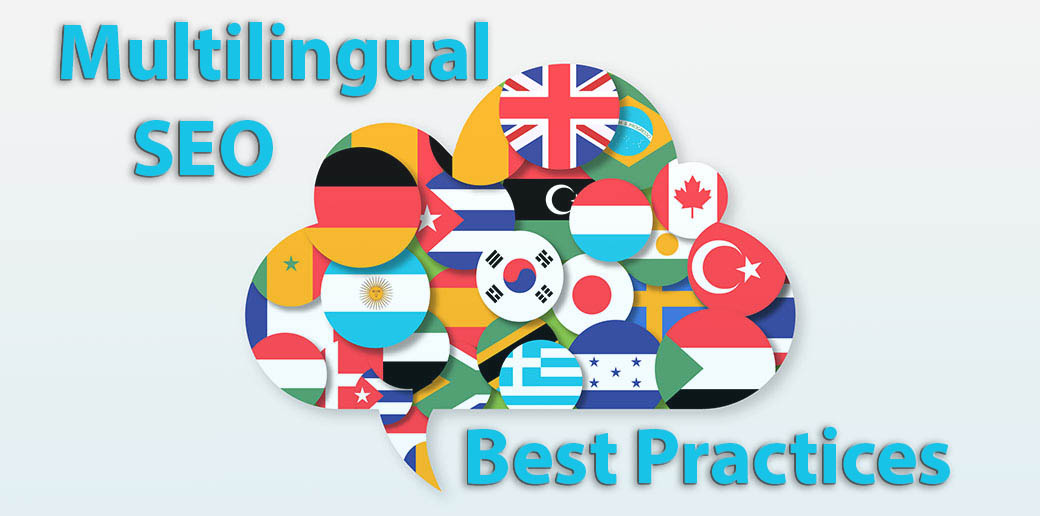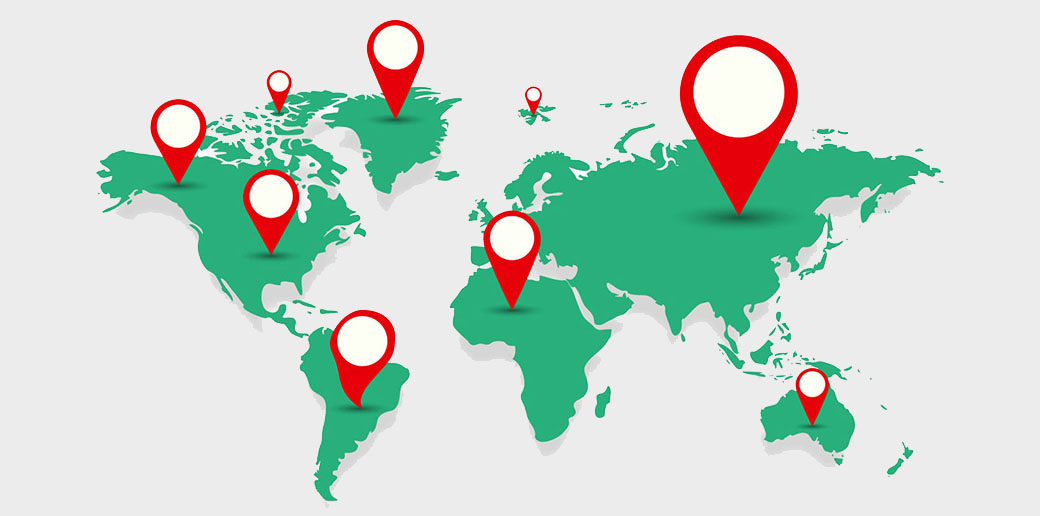Multilingual SEO Best Practices for Local Search Optimization 2020
SEO is perhaps the best investment that you can make once, to later earn a constant profit. The principle of SEO can be compared to a source of passive income – you set up the whole system once, and you can get results ad infinitum. And if today you have come to the need to launch your product in undeveloped markets, then it makes sense to start with an SEO strategy, the results of which will work for you in the long term. In this article, we tell you what multilingual SEO best practices you should implement in 2019 so that Google loves your site, shows it at the right time and to the right users, and gradually promotes it in the top for each of the language versions.

All Multilingual SEO Best Practices Start with the Strategy
So, you already understand that you need a multilingual website SEO, however, just understanding is not enough. To implement this idea, you need a strategy. As part of this strategy, you need to answer the following questions:
- What languages does your target audience speak?
- In which country is it physically located?
It may seem that these two questions sound the same, but the difference is significant. For example, your target audience may speak Spanish but live not in Spain, but Mexico and this also needs to be taken into account. The next question will come precisely from this assumption.
- How do you plan to reach your target audience and what promotion methods will you use?
Several issues are not directly related to SEO but are still important.
- What are the features of localizing your product according to the characteristics of the target audience?
- What are the features of localization of content, what linguistic features do you need to take into account?
- How will you evaluate the results of the implementation of your strategy?
Having clear answers to these questions, it becomes possible to move on to multilingual SEO best practices.
Which URL to Use for Multilingual SEO Best Practices

So, at this stage, you have to make a very important decision and decide which URL your site will have for each of the language versions. It is possible to implement this using four different approaches, and now we will look at the pros and cons of each of them.
- A separate domain for each country.
- Subdomains under a single global domain.
- Subdirectories on a single global domain.
- Different URL parameters.
So, what is immediately worth saying. The latter option is the least preferred, as an example, this is implemented on Instagram. However, Google does not recommend this approach as the multilingual SEO best practices, although it is the easiest to implement.
Also, pay attention to the possible pitfall of the third URL option. This option eliminates the possibility of geo-targeting. Besides, let’s assume that you have a local business, such as a cafe in France, and you want to expand the network and open establishments in the UK. If you use the URL cafe.co.fr/uk, then users might think that they just got on the English version of the cafe site, which is located in France. And they will not even consider the idea of visiting your institution in their city.
Thus, the first two options are the most effective in terms of search engine promotion. In these cases, your URLs will look like cafe.com.uk or en.cafe.com. Make sure that you know how to choose a domain name.
Apply hreflang Tags

These two obscure words mean HTML tags that let Google understand what language this or that page of your site is written in. For example, if you want to create a French version of a page, the line of code will look like this:
<link rel=”alternate” hreflang=”fr-fr” href=”http://fr.yoursite.com/” />
Please note that in this case, the code contains both the language and the location. This is the most reasonable approach, especially since you can target pages not only by location but also by language.
Content Translation and Localization as Multilingual SEO Best Practices
This is a very global and important task, which is the core of the whole multi-language SEO approach. And here you will have to take into account many factors, so we recommend starting with the highest priority language, testing this approach, finding bottlenecks and evaluating the results, and only then move to other languages.
Searching for the Most Relevant Keywords

So, keywords, particularly, long-tail keywords, are the basis of the page ranking algorithm. Let’s assume that you already have an excellent basic version of all pages, you have already done the job of finding the most relevant keywords and created interesting content based on them. Well, now you have to do almost everything from the very beginning.
Here you can ask a reasonable question – why can’t you just translate content, save keywords, and even use professional translators for this, as The Word Point? Of course you can, however, there are some tricks to remember about.
Therefore, starting from the keywords that you already have, you need to find another set of keys that your new target audience will use to find you. Yes, some of them will be quite simple to translate, but other phrases will require accurate localization, taking into account linguistic features. And if you don’t know a second language at the native level, it’s still better to turn to translators (we mean human translation, not Google Translate app to realize multilingual SEO best practices in this case).
Optimize for UTF-8 Characters
If you plan to create different language versions, you will likely use texts that do not contain Latin letters, for example, if you plan to enter the Chinese or Russian market. By the way, we will talk more about these two specific markets below.
In any case, it is necessary to make sure that your site supports these characters. Also, it is necessary to register all meta tags in these languages as well.
Cultural Localization as Multilingual SEO Best Practices

What does cultural localization have to do with multilingual SEO best practices? There is a direct and very important relationship. And these are behavioral factors that, as we know, Google also takes into account. If you do not carry out cultural localization, then behavioral factors will deteriorate, and the bounce rate will be constantly high. Local search engine optimization and cultural localization concern all the content that is on your site, but above all, this is true for images, because the brain perceives them earlier than the text.
If representatives of a specific target group find your images offensive or inappropriate (for example, a photo of a girl in a swimsuit shown to Muslims), they will most likely immediately close your site and never return.
This is true for textual content, which must not only be translated but also localized according to cultural characteristics. You should review all ambiguous phrases, as well as take into account the specifics of mentality and perception of the target audience. For example, romantic Americans and pragmatic Chinese can interpret your marketing ideas in different ways.
National Currency
Be sure to include the ability to see prices in the national currency of the country for which you are targeting. Yes, everyone can approximate the dollar exchange rate to their national currency, but not everyone wants to do this, evaluating how profitable your proposal is.

UI and UX Localization for Multilingual SEO Best Practices
It is also necessary to localize the user interface to give an equally cool experience of interacting with your site for each of the target segments. In this context, it is very important to maintain the convenience of navigation, correctly translate each of the buttons, but the closest attention should be paid to calls to action.
Remember, we talked about cultural features? Obviously, your product or service as a whole solves the same problem that is relevant for many, but there is a difference in how to present this to users from different countries. For example, pragmatists immediately want to see obvious advantages and economic benefits. Emotional Latins will be guided more by emotions than common sense. It is important to take into account cultural differences when developing marketing and appealing messages. All this is also an integral part of behavioral factors that have a direct impact on both SEO and your level of profit from new markets in the long run.

Adapting to Local Law
Your terms and condition mustn’t contradict the laws of the countries in whose markets you plan to sell your product. And besides, there are even several specific content requirements that you must consider as well. For example, Chinese law prohibits the use of skulls or bones on the websites, on products or their packaging, not to mention the corporate identity of a company entering the Chinese market.
At this point, several important factors that we spoke about earlier converge. There are cultural localization, user experience, and behavioral factors. Not taking legislative features into account, you risk not only getting a high bounce rate, and fines from Google, but also real problems with the law of a particular country. Therefore, this is not the case when it’s worth the risk.
New Approach to Link Building in Multilingual SEO Best Practices
What else is important for successful SEO promotion? Yes, we know that you know it. These are backlinks, and you have to get quality backlinks for SEO. But in the case of SEO for the multi-language website, there is one more rule.

As you know, most sites surfing the net are English-language sites. However, if you want to build a link base on a page that is written in another language, then you need to publish links on sites that work in that language as well. For example, if you are promoting the Spanish version of your site, then the publishing site should also be Spanish. Needless to say, the site itself must be reliable, and the link should lead to the Spanish version, and not to the main one.
Features of Working with Countries Where Google Is Not a Priority
There are several countries where Google was never able to gain popularity.
Japan
Japan is a country that loves borrowing like no other. As a result, it turned out that they formed several alphabets:
- Kanji are hieroglyphs borrowed from China;
- Hiragana is a syllable alphabet, used in writing;
- Katakana is also a syllabic alphabet, mainly used to write borrowed words;
- Romaji means using Latin characters to spell Japanese words. No matter how strange it may sound, but romaji is the same Japanese alphabet as everyone else. Its characters are completely identical to the English alphabet.
Now the most interesting thing – when collecting the semantic core for promotion in Japan, it is important to consider phrases recorded by all kinds of these alphabets, since there is a request for each of them.
China
Website promotion in China and SEO optimization for Baidu is a complex process that has many pitfalls in the form of licenses, hosting, domain format, Internet censorship, legal restrictions for non-Chinese companies operating in China. Promotion of a site in Baidu should begin with choosing the right domain, ordering a hosting in China (otherwise the site will load at least 50 seconds) and issuing an ICP license.

Next, it is necessary to register in Baidu, collect and cluster the semantic core, do internal optimization and create a link profile, configure contextual advertising, and more.
But, when promoting in Baidu, the same basic ranking components are used, such as:
- relevant semantic core
- on-page optimization
- off-page optimization
- site loading speed.
Russia

Yandex, as one would expect, understands the Russian language very well, therefore, concerning the recognition of Russian-language words and texts, this search engine surpasses all its competitors.
As for the differences with Google, the link mass in Google has almost no regionality, so it is not paid attention to. Website promotion in Yandex necessarily takes this feature into account. In this search system, queries are geo-dependent, so it’s much easier to bring the site to the first position in a particular region, but the task is complicated several times when you want to achieve the same result across the whole Russian territory.
Main Takeaways
So, as you can see, not everything is so simple with multilingual SEO. To realize multilingual SEO best practices, it is important to
- develop a competent strategy,
- choose the right approach to generating URLs taking into account the specifics of the business and the features of the advertising that you plan to run,
- enable Google to understand which languages you use and for which regions you need to display,
- translate and localize content including UI,
- and also take into account the peculiarities of promotion in countries that use other search engines as the main ones.




Leave a Reply